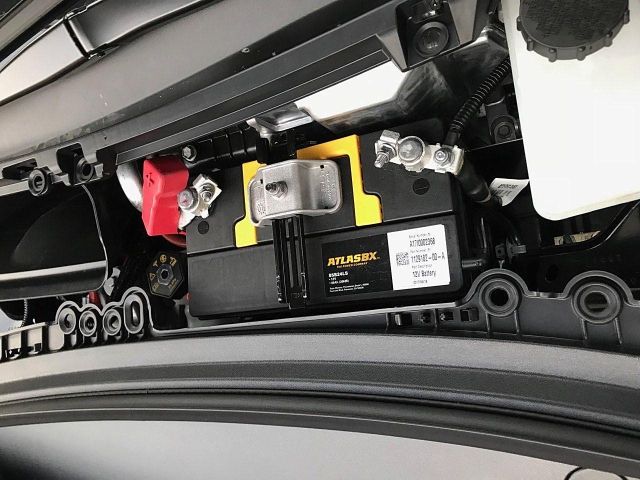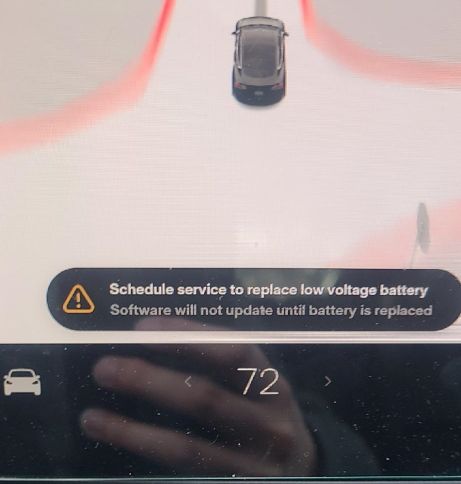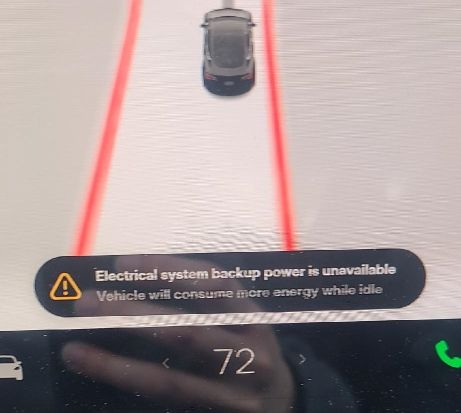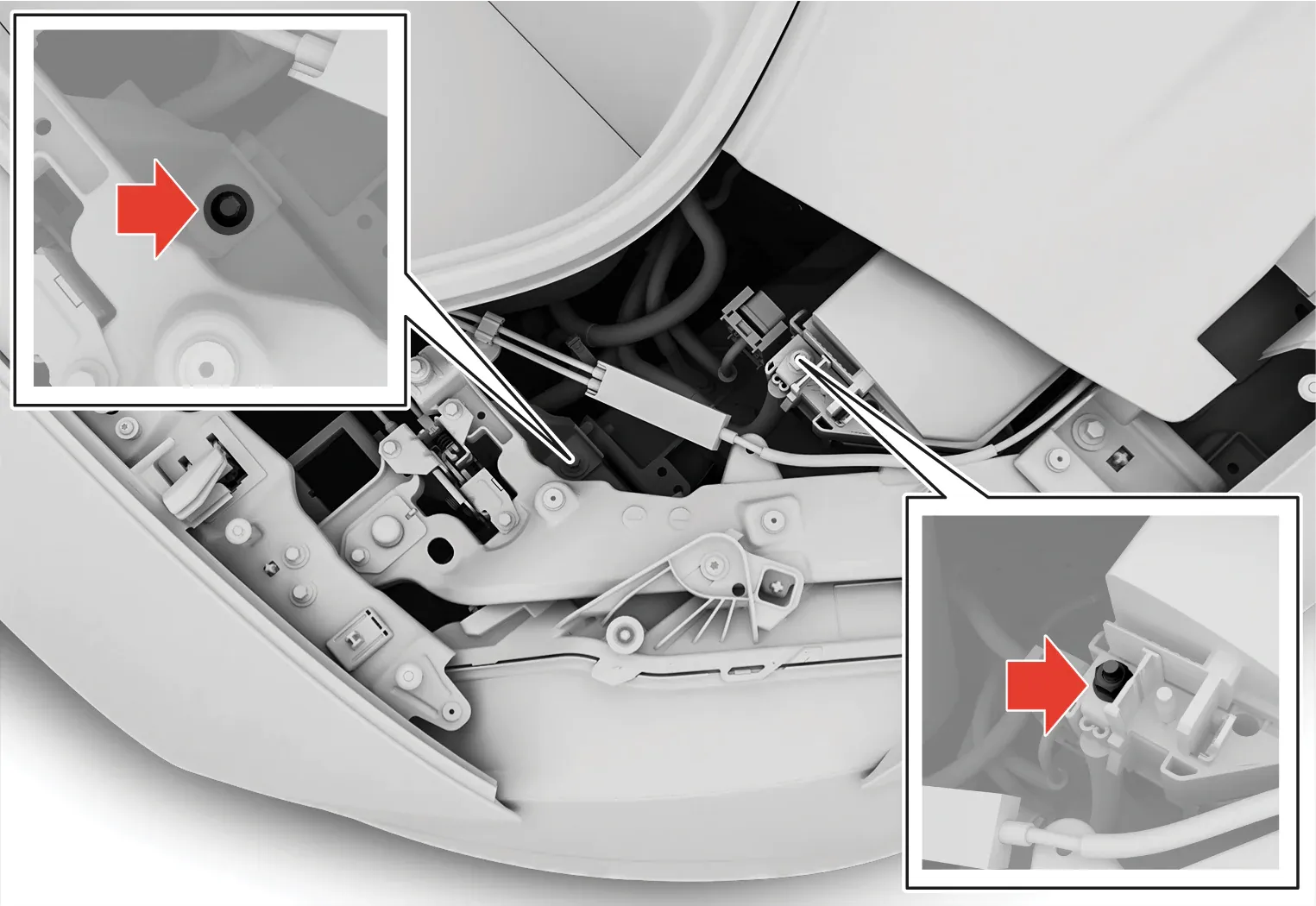The 12 Volt Battery In Some EVs Could Leave You Stranded

Electric vehicles have an Achilles heel that could leave you locked out of your vehicle and potentially stranded. In an Electric vehicle, there are two types of batteries at work.
Firstly, you have the large and very expensive high-voltage battery that is used for propulsion. In vehicles such as the underdog Polestar 2 it allows for 0-60 times of 4.2 seconds or the golden standard Tesla Model S Plaid with a blistering 1.99 seconds. This battery is also responsible for providing ranges of upwards of 396 miles, in the Model S Plaid, or a more modest 260 miles from the Polestar 2.

Secondly, EVs rely on a 12-volt, often a lead-acid relic of a battery. This low voltage battery powers things such as the vehicle's locks, radio, ECU, and many more items. Pretty much if it is not related to propulsion, the 12v battery powers it. The separation of low voltage and the high-voltage propulsion system is by design with regard to safety. In the event of an accident with a vehicle that only uses a high voltage system, it would be possible that first responders would have to deal with a highly electrified vehicle.
All the ECUs in the vehicle are powered from the low voltage, as well as the power relays that separate power from the high-voltage battery pack and the rest of the high-voltage network in the car... That separation allows us to safely disconnect the high voltage from the low voltage when the vehicle is not being driven or in the event of a crash. – Ryan Miller, manager of electrified powertrain development
What happens if the 12v battery in an EV fails?
There is a very real possibility of a 12v battery dying in an EV. If this happens while the vehicle is locked, you will be unable to access the vehicle as there is no power to the locks. This could leave you stranded, unable to enter your vehicle.
Fortunately, electric vehicles will often top off the 12v battery and keep it charged via the high-voltage battery. Similar to how an internal combustion (ice) vehicle uses an alternator to keep the battery charged.
Age will always be a factor when it comes to EVs due to battery degradation. Over time, a battery will deplete and be unable to provide the consistent voltage required. Tesla vehicles, at least in the cast of my 2018 Model 3 Long-Range AWD, will monitor the 12v battery and alert you when it needs to be replaced.
At around 70,000 miles, I received the message stating that the low-voltage battery needed to be replaced. This was thanks to Tesla's systems monitoring the battery.


Unfortunately, I had to wait a few weeks for the appointment at the Tesla service station. This left the vehicle susceptible to the 12v failing. If it were to fail, I would have been locked out of the car.
The Backup Plan
There is the possibility of jumping the 12v in order to at least access the car. A Car Battery Booster Pack such as the item below or the aforementioned link is what I purchased. I saw this as a backup plan to the 12v failing. If the 12v fails, I would be able to use this battery booster to jump the 12v battery and I would be able to access the vehicle.
Just as an ice vehicle, the 12v location can be in a different location in every EV. I suggest every EV owner become familiar with the respective location. With regard to a Tesla Model 3 the 12v battery is located in the front-trunk.

Talsem.com has a great write-up on the process. This can be found below.
- Open the hood
- Pull the maintenance panel upwards to free the trim clips that are holding it in place.
- Pull the cabin intake trim panel upwards to free the trim clips that are holding it in place.
- Connect the red positive (+) line from the 12V power supply to the red positive (+) connector on the 12V battery.
- Caution: Allowing the positive cable to come into contact with other metal components, such as the battery tie-down bracket, will cause damage to the Model 3.
- Connect the black negative (-) line from the 12V power supply to the black negative (-) terminal on the 12V battery.
- Turn on the external power supply (as directed by the manufacturer). To turn it on, touch the touchscreen.
- Note: It can take a few minutes to get power to activate the touchscreen.
- Disconnect both cables from the terminals on the 12V battery, starting with the black negative (-) cable, when external 12V power is no longer required.
- Replace the cabin intake trim panel by reinstalling it in its original spot and securing it with a firm push.
- Place the maintenance panel back in its original location and fasten it by pressing down until it is secure.
- Push down the hood to close.
Age isn't the only reason a 12v could fail. Polestar states the following in the manual.
There are several reasons why a battery may become discharged, such as the vehicle not being used for a long period of time, a temporary malfunction or a blown fuse in the vehicle's charging circuit.
Since I also have a Polestar 2 I familiarized myself with the location of it's 12v battery as well.

For a full write-up on the process of jumping a 12v battery in a Polestar 2, check out the manual.
I was able to have my service appointment before the need of such antics. It was nice to have the piece of mind of the battery booster pack. The adoption of another standard voltage, such as 24 or 48 volts, is yet to be seen; for the time being, the 12-volt system stays in use in many EVs. I believe every car owner should have a device like the one I suggested as a backup plan.
Sources, 2, 3
This post contains affiliate links. If you use these links to buy something, we may earn a commission. Thanks.